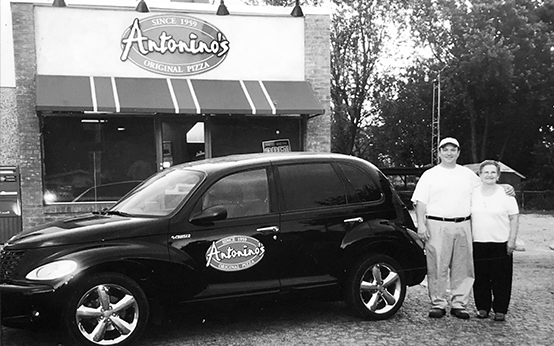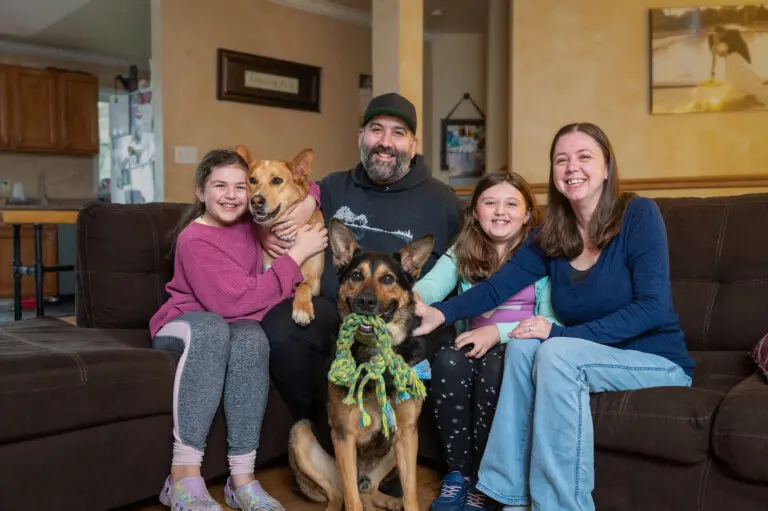The duration of the race was twenty-four hours, but the margins dividing success from failure, win from loss, were measured in micro-seconds. Those micro-seconds stacked in the favour of local endurance racing phenom, Roman De Angelis. On January 29, Roman and his teammates on The Heart of Racing, Marco Sorenson, Darren Turner, and Ian James, took the top spot at the Rolex 24 At Daytona GTD category at Daytona International Speedway. The win was an historic first victory at Daytona for The Heart of Racing and Aston Martin—particularly sweet for Aston, which has competed in races at Daytona since 1964. The team also took home the Michelin Endurance Cup for having the best-in-class position at the six, twelve, eighteen, and twenty-four-hour marks.
Winning on top of winning.
The following day, Roman was back to his Engineering classes at the University of Windsor, quoted in local media as saying: “I’ve had a couple hours sleep. To be able to win [in Daytona] is definitely a dream come true.”
The win in Daytona is the culmination of a lifetime of competing on the track. At age nine, Roman began racing go-karts. These, however, were not the go-karts of most people’s youth, with pull-start engines. Roman roared around tracks at seventy and eighty miles per hour. He won the first kart race he ever entered.
“I competed in go-karting all over North America,” Roman remembers. “In Vegas, Quebec, California, Texas.”
Even at that young age, Roman kept his eye on the prize, racing his way to Canadian National Karting Champion.
He brought his winning ways to the Formula 1600 circuit when he was fourteen years old and was named Rookie of the Year.
That was a long way away in Daytona in January.
The Rolex 24 At Daytona is as grueling as it sounds.
“The driving is divided between four drivers,” Roman explains. “The race has minimum drive times. Each driver must drive at least four hours thirty minutes. Once the driver does that, then the strategy takes over and whoever is faster in the car drives the most. I drove for about eight hours.”
The race was meticulously monitored by members of The Heart of Racing team. Engineers kept constant contact with drivers via radio communications. The cockpits in these Aston Martins look more like fighter jets than a commercial roadster.
“They tell us which knobs and settings we need to go through,” Roman says. “There are anti-brake-locking systems, two engine maps—one looking at air/fuel ratio, the other alters how the power gets applied to rear wheels. There are smoother maps, or fuel-saving maps that you’d use when stuck behind a car.”
The team is always working on strategy.
“Certain times you don’t have the speed or the room to pass another car,” Roman continues. “Using up less fuel when following behind someone means less fuel is needed at the next stop. You might beat that driver out of the pits.”
No detail is left to chance. The drivers spend considerable time practicing “driver changes”—when one driver pulls into the pits and exits the car so his replacement can take over.
“We can do it in fifteen to twenty seconds from the time the car stops, undo all five belts, and take out your seat insert. There are lots of tiny details,” Roman says. “These add up to big picture results.”
This doesn’t even take into consideration the physical punishment the drivers endure while behind the wheel. The temperature within the car can reach 130 degrees Fahrenheit.
“We wear heart and temperature monitors,” Roman continues. “Our resting heart rate is around 140 for the two or three hours we’re in the car. All the while maneuvering around sixty-three other cars that are all hunting each other, trying to find an edge. You’re not dealing with seconds or minutes, but micro-seconds. It’s like a high-speed chess match.”
During breaks from the track, drivers visit the team nutritionist for food and hydration. Then it’s over to physio to work on any aches or nascent injuries. Drivers also spend time with the strategist to ensure everyone knows the plan: when that driver drives next, and for how long.
“Whatever time is left over you rest and prepare yourself to drive again,” Roman says.
Following the Daytona win, Roman was quoted: “I’m just so happy to be here with this team in victory lane. The whole Heart of Racing family is great, they executed pit stops perfectly. The 24-hour race in Daytona is the one I have always wanted to win since I was a kid…”
There is no rest for the successful. Roman is back attending his classes, and in March he will be in the driver seat for The Heart of Racing competing in the 12 Hours of Sebring in Florida.







